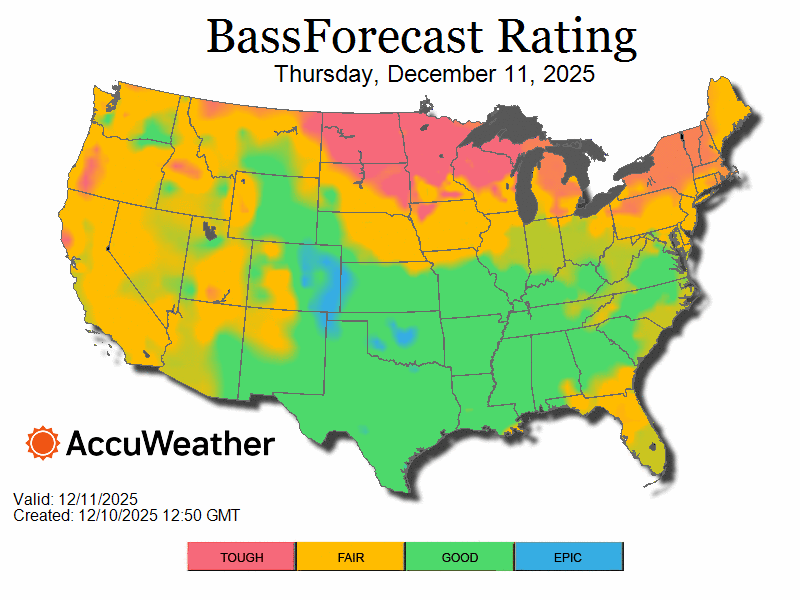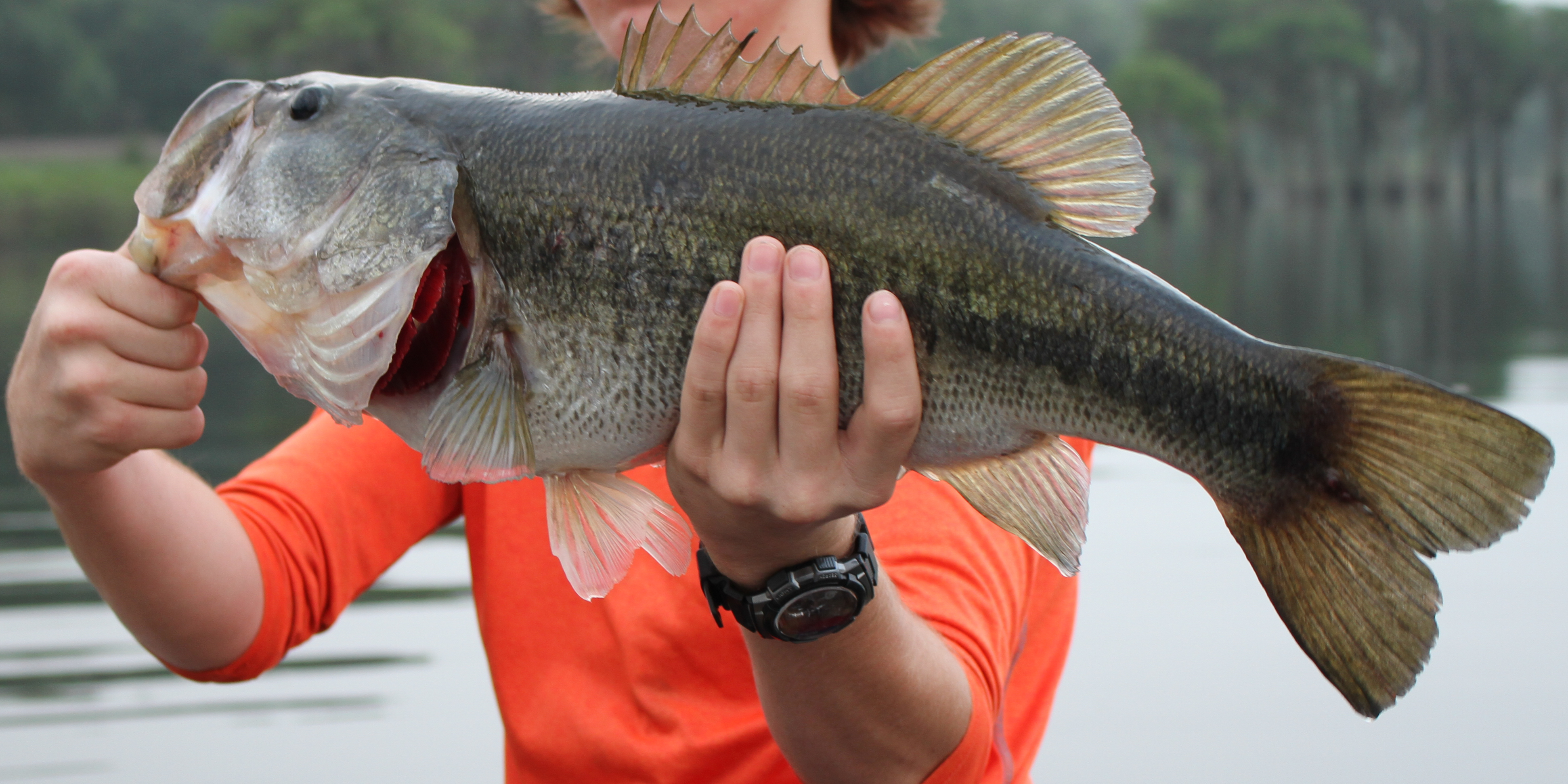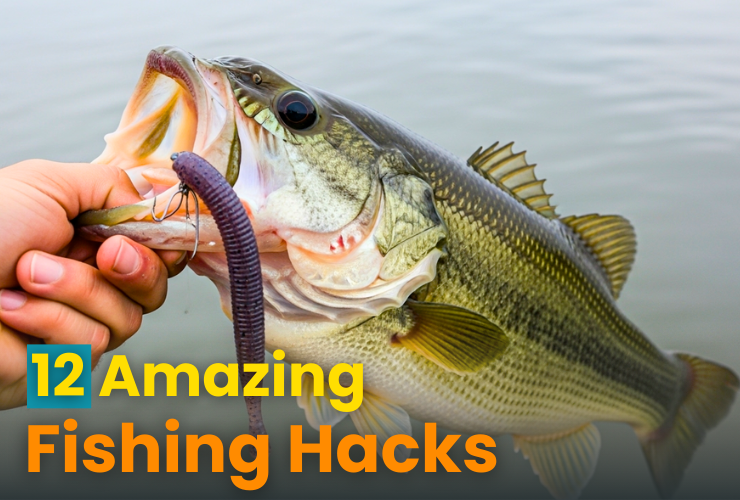Fishing Cover-Oriented Bass: Seasonal Strategies and Tips
Share this article with every angler you know!
You can spend your entire lifetime learning new things about bass fishing. From new ways to tie up rigs, to optimal setups for various presentations, all the way down to how the most minor weather changes can impact the bite.
One part of the art of bass fishing that has a lot of fine details for you to learn is cover. There are a wide variety of forms of cover, cover changes from season to season, and the way bass use cover changes due to a variety of factors.
Today, we’re going to give you detailed insights on fishing cover-oriented bass, so that you can check this part off your to-learn list.
Newsletter Signup
Defining Cover: The Different Types of Bass-Hiding Spots
First, we need to define what “cover” is in the fishing world. The short version is that it’s anything that a bass can hide in or around, but it’s a lot more complicated than that.
Man-Made Structures:
First, there are man-made structures that serve as cover. These can be found in practically any developed fishery, and they include a wide variety of things in the water.
Usually, you’re going to see piers, boat ramps, docks, irrigation piping, man-made structures for ducks and other aviary species to use, water circulation systems, and similar things.
In general, it’s anything that humans have put in the water, and it’s usually something that was meant to serve a purpose.
Natural Structures:
Natural structures are great bits of cover and bass love to hold up in them. However, it’s a little harder to define these structures since they’re any natural material in the water.
Mostly, we see these as stumps, downed trees and large limbs, and thick weed beds.
Natural structures have some pros and cons. First, they’re typically the perfect environment for bass, and you don’t have to worry about unnecessary movement disturbing the bass such as the water rushing from an irrigation pipe or loud kids running down a pier that you’re fishing around.
However, they also tend to be easier to get snagged on, and since they’re not as uniform as man-made structures, it can be difficult to tell exactly where you need to cast when you cast right next to them.
Non-Structural Cover:
The non-structural cover is almost always natural. We’re classifying this as the thick algae pads that span the surface of many ponds, lily pads, and similar things.
This is a cover that bass love to hide under, but one neat positive about it is that you can fish right through it in most cases. You can punch through an algae mat with a jig or frog and skip it around for stunningly life-like presentations, hop topwater frogs right around the lily pads, etc.
You can’t really do those things with most other forms of cover, and as you’ll see shortly, you usually end up fishing around the cover. Cover is typically just as much of an obstacle as it is a target spot.
The Basics of Fishing Cover-Oriented Bass
We’ve already talked briefly about a few of these concepts, but even the basics of fishing cover for bass are far more complex than we’ve talked about so far.
Here are some tips and strategies that will comprise the bulk of your cover-fishing toolbox.
1: Fish Around Structures
When fishing around structures, you’re not going to cast directly at the structure itself. That’s a great way to smack your lure off it and damage your expensive tackle.
Instead, you’ll spend most of your time fishing cover by casting along the sides of it. The goal here is to entice the bass to leave cover and snatch your lure. Not to put the lure right in the bass’ face.
This is best done by casting from various angles. Start by trying to replicate the presentation of a bait fish coming in toward the shore and passing the cover along the way. If that doesn’t work, or you notice bait fish already swimming along the bank eating small crustaceans and smaller fish, cast horizontally to the bank outside of the cover location.
The bass is likely to be aiming to ambush bait fish as they swim by. So, mimicking what the bait fish are doing is a great start.
However, you’ll usually end up approaching the cover from every angle possible until one of your presentations sticks. Do a few casts with different presentations, switch your casting angle, and rinse and repeat until you get a bite or are confident the spot is empty.
2: Cast Past Cover
The most effective way to cast at structures isn’t just to cast right next to them. You want to cast far past the structure in a way that makes the lure work its way next to the cover on the retrieval.
This ensures that you’re not smacking the water right next to the cover and startling the fish, and it’s a far more natural presentation.
Instead of essentially mimicking a fish falling out of the sky right in front of the bass, you’re mimicking a bait fish coming in from the distance.
3: Punch Through Soft Top Covers
We talked about this briefly, but it’s an excellent strategy with certain bass lures. If you see an algae mat or moss mat on the water, one of the best things you can do is punch through it with a frog or heavy jig.
This perfectly mimics something like a frog hopping into the water through a moss mat, and when a bass is stalking the water below, they’re not going to wait to see what it is. They’re going to bite.
The only issue with this technique is that you’re going to be cleaning your rig after every cast, and you need a heavier rod and line to ensure the heavy weight of the moss buildup doesn’t break your equipment. Especially if a large bass latches on, too.
With lily pads, you have to remember that your primary goal with a lure is to mimic the behavior of the animal it copies. In the case of lily pads, you’re mimicking frogs with topwater frogs or poppers and hopping them between the pads. It’s perfectly fine to get your lure on a pad, let it sit for a few moments, and then hop it off suddenly. Sometimes, you’ll even get a blowup where a bass will swallow the pad and lure at the same time.
The main thing to remember here is that when fishing mats and pads, fishing around the outside is inefficient. Get right in the thick of it.
Seasonal Considerations for Fishing Cover
Now, it’s time to talk about the various ways to cover changes from season to season and how you’ll want to approach fishing.
Some forms of cover are only around during certain seasons, some structures will behave differently, and bass will treat certain types of cover differently depending on the season.
1: Mats and Pads are Spring and Summer Options
First and foremost, the only time you’re going to be fishing around mats and pads will be the spring season and the summer season. As the water cools, those forms of cover die off, and they clear out fairly quickly. Especially if there’s a carp population in the water. Without those resources replenishing themselves, carp will eat all of it in no time.
So, make sure you get out on the lake and make the most of those opportunities while you can.
2: Many Man-Made Structures Go Dormant During the Winter or Have Heating Features
During the colder seasons, most managed ponds and lakes won’t operate their circulators much, and irrigation pipes that pull water for nearby crops aren’t in use. That means that the constant activity that those structures cause in hotter seasons isn’t there, and they can be relaxing habitats for bass.
On top of that, many of those systems produce heat to keep them from freezing. Bass move throughout the water to regulate their body temperatures throughout the cold season. So, they’ll usually hover around those spots regularly.
Of course, not every fishery has these features. So, you’ll have to do a bit of research or take some time in the field to see if it’s a possibility where you fish.
3: Slow Down in the Colder Seasons
Bass can still zip across the water in the dead of winter, but they’re less likely to want to. You need to take a slower, more methodical, approach to fishing around cover during the colder seasons. Jerk baits, light hops from jigs, and subtly twitching crankbaits are all great tactics to start with.
However, in the summer, you can typically crank up the activity to 11 and really work for reaction bites. A good crankbait being ripped right by the cover will trigger bass bites almost constantly, and faster lures such as spinnerbaits and swimbaits are great options, as well.
This correlates with the usual change in pace that you’d make even if you weren’t fishing specific bits of cover.
4: Consider the Hatch from Season to Season
The hatch changes as the seasons do. While bait fish are going to be staples all year round, you’ll start getting a lot of bites on crawls around the start of fall. That’s when the crawfish develop their trademark red coloring, and they’re ready for the bass to turn them into lunch.
During that period, you might want to use a red craw trailer on the end of a football jig. Bounce the lure gently at a slow to medium pace next to the cover. The bass is likely to get tricked into thinking it’s a seasonal delicacy, and you’ll have a better chance of drawing it out.
In comparison, springtime is when a lot of bugs start to hatch after a long winter, and they buzz the top of the water. This is the perfect time to use a fly rod or ultra-light rod with topwater bug lures and gently bounce them off the surface next to the cover. You can get a big explosion from the bass, and this opportunity quickly fades away later in the year.
As you’ve probably figured out, a lot of your fishing strategy is going to depend on the way the local ecosystem is behaving at any given time, and you need to adapt to that whether you’re fishing around cover or not.
What’s the Best Season to Fish Around Cover for Bass?
Cover is going to be a core part of your bass fishing strategy almost all the time. It’s typically the most likely spot to produce a good bass efficiently, and it’s fairly easy to do.
However, there are some situations when cover isn’t as great of a choice as you think.
First, cover is often not as important during the spawn. The bass usually make their beds on the flats and stay on them until their eggs hatch. In unpressured waters, beds will often be in the open. In pressured waters, beds will usually be near a piece of cover. The best way to identify a bed near the cover is to look for a slightly lighter patch of the bottom where the bass has used its tail to clear a clean area for the female to lay her eggs. The spawn presents a unique fishing opportunity that you only get to experience once per year. You get to fish those beds and experience an entirely different type of bass fishing. Just be sure to release fish quickly so they can finish spawning and/or defending their eggs.
Second, when the water temperature drives bass off to deeper spots, you’re not going to spot cover with your naked eye to fish it effectively, and there might not even be any cover down there. You can use a fish finder to spot larger underwater structures, but you’re still fishing partially blind.
In any case, fishing around your usual go-to spots isn’t going to be much help until the bass comes back up to feed or regulate their body temperature.
How to Find the Best Cover for Bass Fishing
As you continuously fish the same fishery, you’ll locate your own go-to cover spots, but there’s always something you’re missing, and if you’re new to a spot, you need a bit of help to get started.
Bass Forecast can help with all the fishing resources you need for all of America’s waterways.
Download Bass Forecast fishing app now and become a pro at fishing the cover-oriented bass!
Share this article with every angler you know!





.png)



.png)
.png)